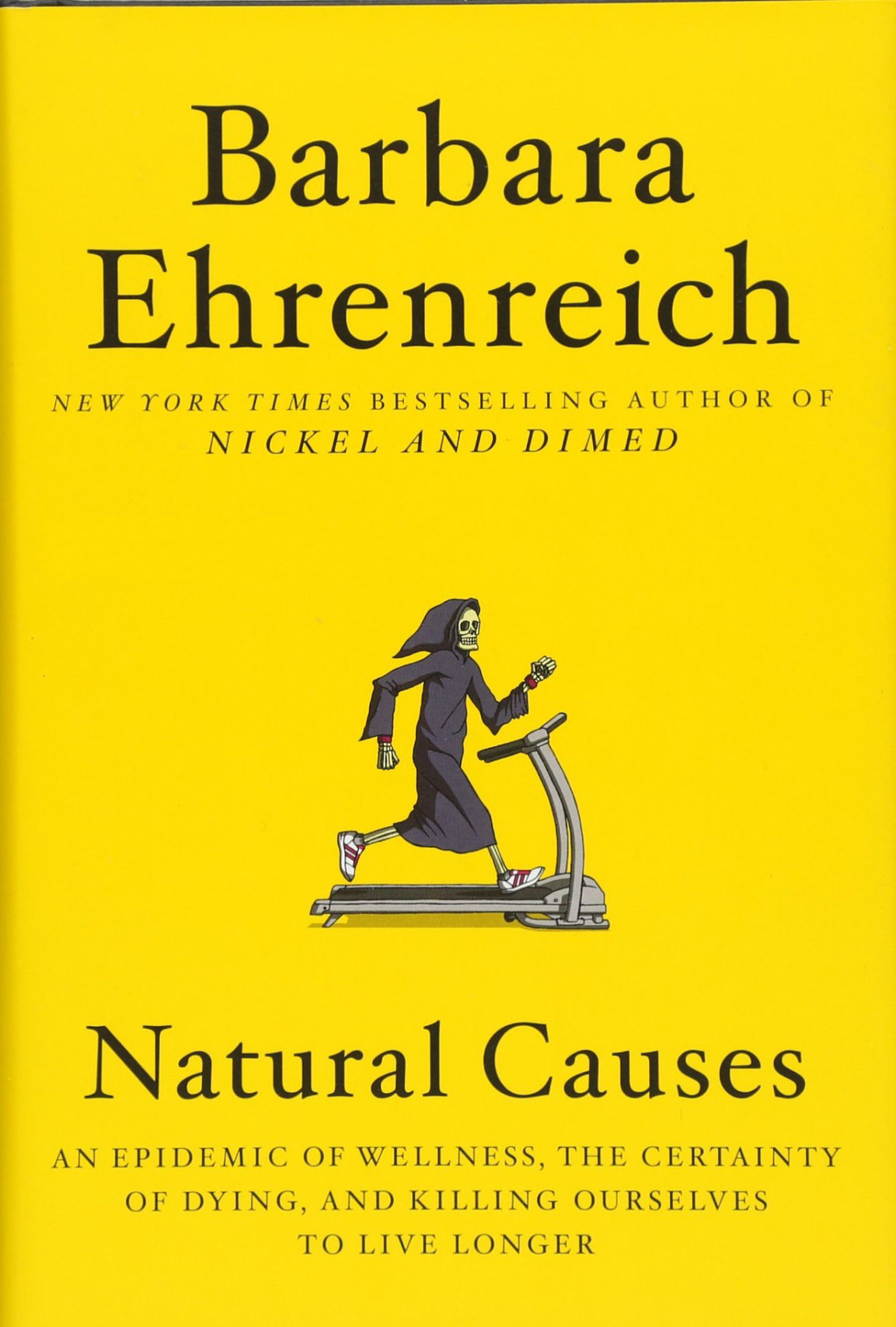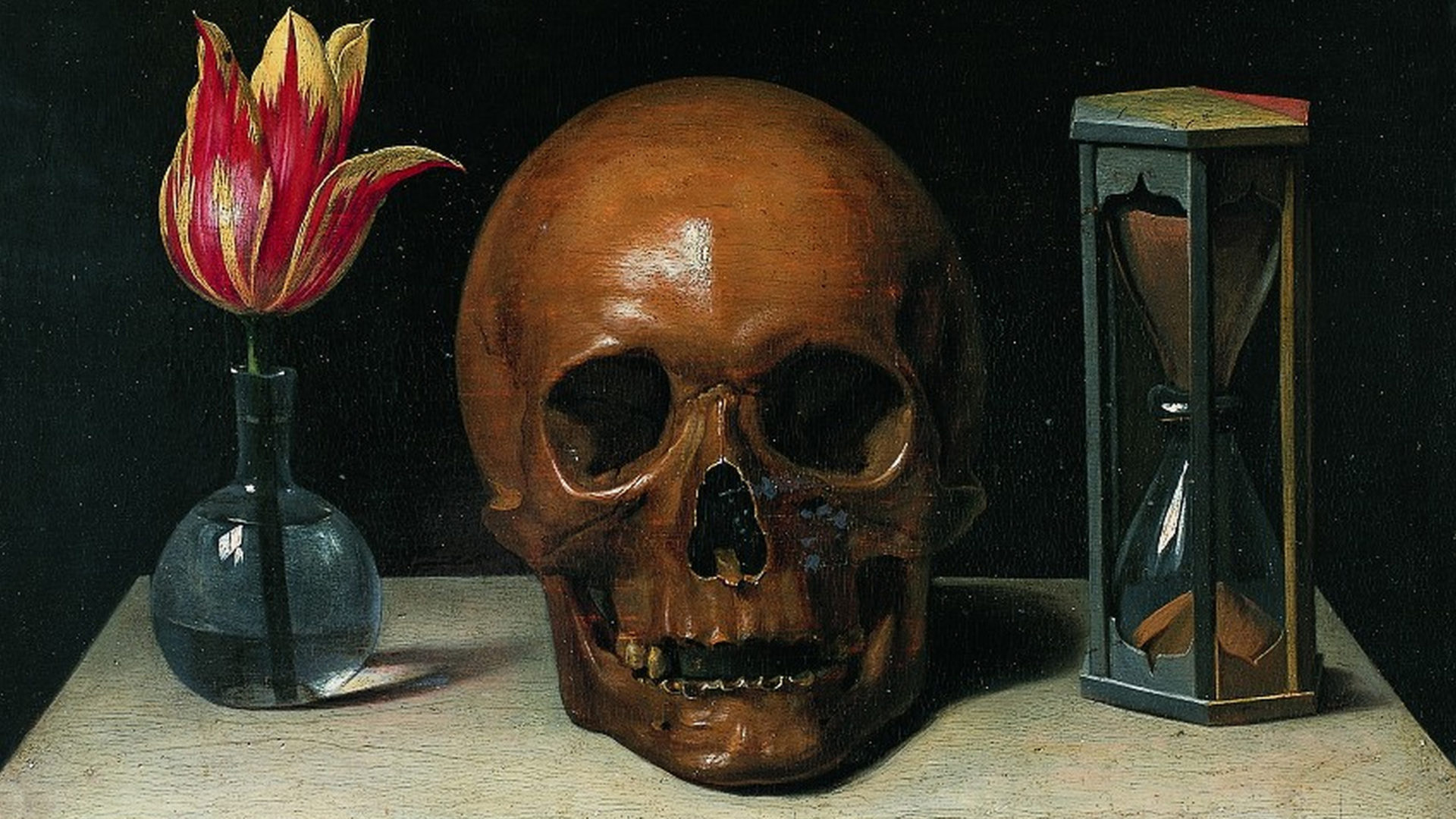Barbara Ehrenreich, the celebrated activist writer (not sure what title suits her best), has unleashed a sobering critique of American society and its obsession with perfect bodies, wellness, and the maniacal quest for immortality that reminds me of the much-missed indictments of Christopher Lasch, author of, among other works, The Culture of Narcissim. If proof were ever needed that good writers with a clear sense of priorities are our best guide to the gargantuan scams imposed on an unthinking and docile populace, one can’t do worse than reading the author’s Natural Causes: An Epidemic of Wellness, the Certainty of Dying, and Killing Ourselves to Live Longer. This book is nothing short of a wake-up call to those who have impoverished the quality of their lives in order, paradoxically, to prolong them.

Diagnosed with breast cancer in 2000, Ehrenreich, armed with a Ph.D. in cell biology from Rockefeller University, turned her attention to the “three-billion-dollar-a-year” health care industry to check whether this colossal enterprise makes any difference to the lives of Americans caught in its web. The promise of longevity and control—through exercise, diet, medical care and the vague exhortation of wellness gurus—turns out to be a chimera, a chase for the holy grail, since the body, as a natural entity, is simply indifferent to our will, desires, disciplines, or financial investments.
Part of the social elite that worships at the altar of health, shuns delicious foods, atones for every dietary lapse with “fasts, purges, or diets composed of different juices carefully sequenced throughout the day” and believes in preventive care, Ehrenreich has been awakened to the life-denying effects of these measures, whose primary purpose, it would seem, is to continue to feed the health industrial complex and cause “iatrogenic illnesses.” Overdiagnosis is now an epidemic all its own, one that leads to unnecessary surgeries. In her mid-70s now, Ehrenreich thinks she is old enough to die, especially if members of the military are expected to do so at the tender age of 18.
Medicine is no panacea. Despite being shrouded in a veneer of science, it is, at bottom, another healing ritual with its own totems and taboos, like the white coats borrowed from German science labs. The “annual physical exam,” with its confessions, was introduced in the 1920s and was later recommended by the American Medical Association. By 2015, when one physician deemed such exams to be “worthless,” they were costing Americans “an estimated $10 billion a year.” Childbirth, too, was medicalized before the Soviet and French practice of Lamaze came to save the day for millions of women who wanted to have a natural experience.
Even something as regular as menstruation, which leads to significant blood loss over time, is still not fully understood. Most animals don’t menstruate and of those that do humans bleed the most. In 1993, one Margie Profet suggested that menstruation cleansed the vagina of “pathogens that may have been introduced by an intruding penis” and was awarded a MacArthur “genius award.” That same year, a Harvard biologist explained menstruation as a form of war for resources between mother and fetus.
Just like Abrahamic religions legitimize their superstitions by attributing them to an all-powerful monotheistic god, the ritualistic practices of medicine rely on some vague connection to science, justifying the use of procedures and remedies that are, at times, more dangerous, even lethal. Scarring indignities in the medical temple abound. Until very recently, women were the main victims. As if invasive procedures were not humiliating enough, most of them endure “the punishing cultures of female dieting and thinness, with its purging and fasts.” The case of the glamorous actress Jane Fonda who popularized aerobic dancing is quite telling. Beginning at the age of twelve, she maintained her “startlingly lean body by self-induced vomiting up to twenty times a day.”
Paradoxically, the preoccupation with body image has masculinized women and feminized men. Working out, like smoking, is also an unmistakable sign of social status. While blue-collar workers drink beer and smoke after (or during) work, their white-collar counterparts carry their yoga mats to the gym and follow a prescribed routine, treating their own fitness as an assignment. No one is spared this obligation, least of all those over 55, who are now expected to maintain the discipline and work themselves out to death. Some go for extreme sports or expensive adventures like climbing Mount Everest. However one looks at this, “the price of arrival is endless toil.” And hunger. Aware of the life-extending power of caloric restriction, health-conscious people go through life with an empty stomach, which, thankfully, is not an option for the author. Ehrenreich, a gym rat herself for 30 years who could lift with the best of them until exercise-induced ailments slowed her down, continues to work out and eat healthily, but she won’t give up butter and wine. A life of semi-starvation is simply not worth living. “Life,” she adds, “is too short to forego these pleasures, and would be far too long without them.”
What good are these measures, anyway, if we are betrayed by our own cells (assuming that such cells are our own, to begin with)? Macrophages, the Praetorian Guard of the so-called immune system, were believed to protect us from invading antigens, but it turns out they also collude with cancer cells and enable them to metastasize. They are also drawn, alas, to damaged cells, causing more inflammation that no amount of vitamins and antioxidants can ultimately stem.
The body is simply not designed for the best interests of its tenant, whoever that tenant may be. Already outfitted with obsolete parts, such as male nipples and the appendix, it is a theater of endless war among cells, leading to autoimmune diseases such as rheumatoid arthritis and multiple sclerosis. The “self”—an enigmatic secular concept that emerged in the 17th century to dethrone the more religious “soul”—is a helpless and often unconscious bystander as the cells go at each other or enable rogue agents to cause widespread damage. The self may like to see itself in mirrors, portraits (nowadays selfies), or in autobiographies, and be guided by the expectations of society—a “ghostly entity” invented around the same time—but it has no sway over what lies below the skin. It looks inward, which only makes the body sick with melancholia and depression. While the self is preoccupied with legacies, bucket lists, and gadgets designed to connect it to others, the body it inhabits goes untouched by humans, leading to more illnesses (along with an attention span shorter than that of a goldfish) and the rise of touch therapy and a “cuddling industry.” The Silicon Valley titans who seek immortality in some algorithm or app are wasting their time. We are part of the natural world teeming with agency despite the despotic attempt to bend nature to our will.
As I was engrossed in this fact-checked book, I kept hoping that Ehrenreich would make a connection with ancient philosophies, especially Epicureanism (a favorite of Thomas Jefferson’s). The idea of death as a return to a living nature (a sort of recycling) is one of the core principles of this Greek philosophy. Titus Lucretius Carus (known simply as Lucretius), the Roman author of the first-century BC poem On the Nature of Things (De Rerum Natura), condemned the “fable-mongers” who have tormented the world with their superstitions and insisted that nature “never annihilates anything.” Just like with our bodies, we live in a world that is seriously flawed and in no way was created for our comfort. There is no afterlife in this view, only the constant motions of nature, independent of our will. The soul (the self in our times) and body live and die together, and death, as Epicurus says, is “nothing to us” since it is the end of sensation. “Correct understanding that death is nothing to us makes a mortal life enjoyable, not by adding an endless span of time but by taking away the longing for immortality.” In fact, as the first-century Stoic philosopher Seneca insists again and again in his letters and writings, the fear of death and the obsession with the body are two faces of the same coin that degrades the quality of life and enslaves people.
The corpus americanus is deaf to these age-old exhortations. It wants to be indefinitely muscular, free of ailments and perpetually fine-tuned by the medical establishment. While we fret about losing our political freedoms, the more insidious tyranny of health has quietly taken hold of us and reduced us to anxious chasers of an unreachable utopia. Ehrenreich’s book shows us why this Sisyphean quest for life eternal is the royal road to damnation.





Comments are moderated by the editor and may not appear on this discussion until they have been reviewed and deemed appropriate for posting. All information collected is handled in a manner consistent with our privacy policy.